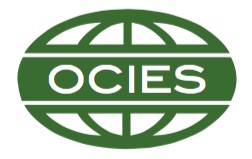‘All abroad’: Malaysians’ reasons for seeking an overseas-based doctorate
Keywords:
culture shock, doctorate, MalaysiaAbstract
This article examines the process by which nine junior Malaysian academics came to complete doctoral degrees in non-Malaysian universities. It expands the scope and refines the focus of an existing study that considered international students’ experiences in New Zealand. Part of the motivation for the current study was the researcher’s recognition that he had sometimes struggled to adjust to the Malaysian university system. And indeed despite the vast sums of money the Malaysian government spends training academic staff overseas, little is known about their motivations for studying abroad, their experiences abroad, and how their experiences abroad shape their interactions within local institutions when they return. The article begins with a brief introduction, an analysis of the existing study and a description of the chosen methodological approach. The following key themes are then discussed: ‘choosing to study overseas’, ‘choosing advisors’, ‘family influences’ and ‘pre-departure training programs’.
References
Asrul, H. (2011, February 01) Malaysia is Tanah Melayu, says Dr M. The Malaysian Insider, n.p. http://www.themalaysianinsider.com/malaysia/article/malaysia-is-tanah-melayu-says-dr-m, visited on December 11, 2012.
Bernama (2009, December 2) Penang bans civil servants from attending BTN courses, Bernama. http://www.bernama.com/finance/news.php?id=459514&vo=16, visited on June 25, 2012.
Blaikie, N. (2000) Designing Social Research. Cambridge: Polity.
Brown, G. (2007) Making ethnic citizens: The politics and practice of education in Malaysia. International Journal of Education Development. 27, 318-330.
Butcher, A. and T. McGrath (2004) International students in New Zealand: Needs and responses. International Education Journal. 5(4), 540-551.
Cummings, W. (1984) Going overseas for higher education: The Asian experience. Comparative Education Review. 28(2), 241-257.
Deloitte (2008) Experiences of International Students in New Zealand: Report 2007 on the Results of the National Survey. Wellington: Ministry of Education.
Fontana, A. and J. Frey (2005) The interview: From neutral stance to political involvement. In D. Norman and Y. Lincoln (ed.) The Sage Handbook of Qualitative Research.
Guest, G., A. Bunce and L. Johnson (2006) How Many Interviews Are Enough?: An Experiment with Data Saturation and Variability. Field Methods 18(1), 59-82.
Hashim, A. (2009) Not plain sailing: Malaysia’s language choice in policy and education. AILA Review. 22, 36–51.
Lee, M.N.N. (2007) Higher education in Southeast Asia in the era of globalization. International Handbook of Higher Education, J.J.F. Forest and P.G. Altbach (eds.) Springer.
Mahathir, M. (1981) [1970] The Malay Dilemma. Kuala Lumpur: Federal Publications.
Mazzarol, T. and G. Soutar (2002) ‘Push-pull’ factors influencing international student destination choice. The International Journal of Education Management 16(2), 82-90.
Musa, M.B. (2003) An Education System Worthy of Malaysia. Petaling Jaya: Strategic Information Research Development.
Noordin, F. and K. Jusoff (2009) Levels of job satisfaction amongst Malaysian academic staff. Asian Social Science 5(5), 122-128.
Novera, I.A. (2004) Indonesian postgraduate students studying in Australia: An examination of their academic, social and cultural experiences. International Education Journal. 5(4), 475-487.
Reporters Without Borders (2012) Press Freedom Index 2012. http://en.rsf.org/IMG/CLASSEMENT_2012/CLASSEMENT_ANG.pdf, visited on June 25, 2012.
Saha, L.J. and C.M. Atkinson (1978) Insiders and outsiders: Migrant academics in an Australian university. International Journal of Comparative Sociology. 19(3-4), 203-218.
Shaari, M.N.G. (2011) Wither the bumiputera identity of Universiti Teknologi Mara (UiTM)? Kajian Malaysia 29(2), 67–89.
Shin, J.C. and G. Harman (2009) New challenges for higher education: Global and Asia-Pacific perspectives. Asia Pacific Education Review. 10, 1-13.
Tagg, B. (2008) Religion and athletic bodies: Western representations of Islamic veils and Muslim athletes. In Social and Cultural Diversity in a Sporting World. C. Hallinan and S. Jackson (eds.). Bingley: Emerald.
Teoh, S. (2011, February 3) Non-Malays unpatriotic for neglecting BM, says ex-editor. The Malaysian Insider, n.p. http://www.themalaysianinsider.com/malaysia/article/non-malays-unpatriotic-for-neglecting-bm-says-ex-editor#idc-cover, visited on December 11, 2012.
Trow, M. (2007) Reflections on the transition from elite to mass to universal access: Forms and phases of higher education in modern societies since WWII. In International Handbook of Higher Education, J.J.F. Forest and P.G. Altbach (eds.) Springer.
Tyson, A. (2011) The Brain Drain Cycle in Malaysia: Rethinking Migration, Diaspora and Talent. Malaysian Journal of Economic Studies. 48(2), 85-92.
UiTM website (2012) List of Campuses. http://www.uitm.edu.my/index.php/en/quick-links/campuses/110-list-of-state-campuses, visited on June 25, 2012.
Downloads
Published
Issue
Section
License
The International Education Journal: Comparative Perspectives is the official journal of the Oceania Comparative and International Education Society. The IEJ, (ISSN 1443-1475), publishes a general volume bi-annually in July and December and also publishes Special Editions occasionally. It is a free, open-access scholarly journal, managed by volunteers. There are no article processing charges, or any charges to authors.
In relation to intellectual property, as of 2020, the IEJ: CP claims only first publication rights; copyright of all work published in the journal remains with the authors under Creative Commons copyright license CC-BY-ND (4.0). Author(s) retain all rights to their works, ensuring that reference to the International Education Journal: Comparative Perspectives is clearly stated on any copies made or distribution. Submissions must not involve third parties with a claim to copyright, and be the sole work of the author(s). It is the responsibility of the author(s) to secure permission to reproduce photographs, illustrations, figures or tables. Single images, tables or figures can be re-used . If more than a single image or table are to be re-used authors must attribute first publication to IEJ: CP notify the IEJ: CP Editor. Authors may also make derivative works which are subject to these limitations.
See https://creativecommons.org/licenses/by-nd/4.0/ for more detail.
Re-distributed or used material must be referenced to the International Education Journal: Comparative Perspectives.
